NGC Ancients: Coins of the Seleucid Kingdom – Part Three
Posted on 11/14/2023
By
Ben Wallace
NGC Ancients Grader
Last month (in Part 2), we ended with the death of the power-seeking queen Cleopatra Thea (125 to 121 B.C.). From this point onward, the kingdom became even more fractured and weakened, leading to its eventual downfall.
This month, we’ll pick up with the rule of Antiochus VIII (121 to 96 B.C.).
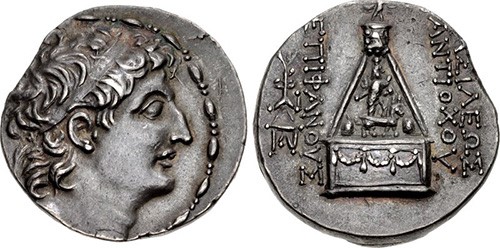 |
The above silver tetradrachm shows the portrait of King Antiochus VIII. The reverse has the Hittite god Sandan standing beside a winged lion on what usually is described as an altar.
Antiochus VIII was the son of Queen Cleopatra Thea and her second husband, King Demetrius II. The young Antiochus VIII initially ruled together with his mother, but eventually turned the tables on her after she attempted to poison him. He ruled a few years before he was faced with civil war, led by his half-brother, Antiochus IX (114 to 95 B.C.). This war broke what little cohesion was left in the kingdom, with some cities changing hands multiple times during the conflict. Antiochus VIII eventually was assassinated by his war minister.
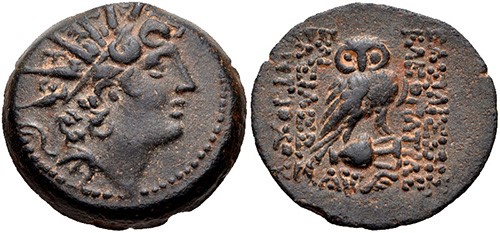 |
This 20mm bronze was issued in the names of both Antiochus VIII and Cleopatra Thea. The obverse shows the radiate head of the king and the reverse features an owl standing on an overturned amphora — a design familiar from the silver tetradrachms of Athens, which circulated widely in Greece and the Near East.
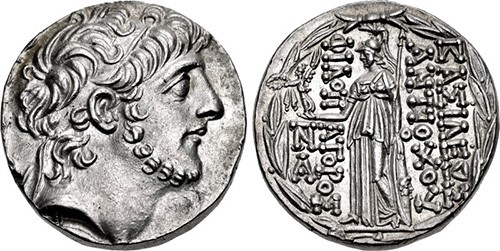 |
Antiochus IX, shown on the silver tetradrachm above, was the son of Cleopatra Thea and her third husband, King Antiochus VII, making him a half-brother of his rival Antiochus VIII. Their civil war caused the kingdom to be split between them, and it would never come back together completely. Antiochus IX was eventually captured and killed by yet a new contender, his nephew Seleucus VI (96 to 94 B.C.).
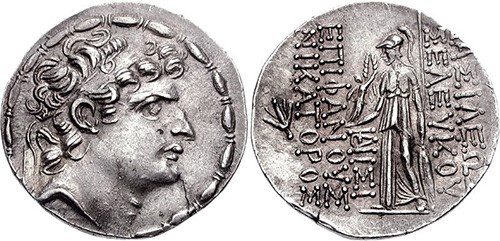 |
The stern portrait on the tetradrachm above introduces us to Seleucus VI. He was the eldest son of Antiochus VIII and the first of his brothers to become king. After the murder of his father in 96 B.C., Seleucus VI waged against his uncle, Antiochus IX (who still reigned over part of the kingdom), eventually killing him. He was known as a tyrannical and violent ruler, which caused his subjects to rise up against him, resulting in his being burned to death.
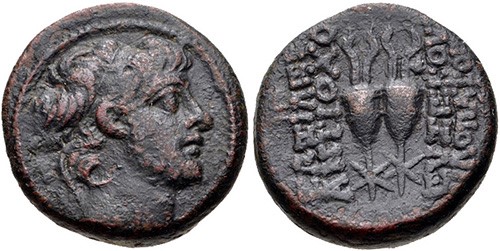 |
The next to rule was Antiochus X (94 to 88 B.C.), the son of Antiochus IX. He is shown above on this 20mm bronze. His reign is not well documented through historical sources. It is known he fought against his rival claimants, losing control of his part of the kingdom. He then disappears completely from the historical narrative.
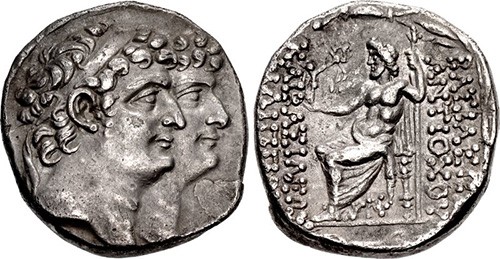 |
After the fiery death of Seleucus VI, two of his younger brothers, Antiochus XI (94 to 93 B.C.) and Philip I (95 to 75 B.C.), shared the throne. The attractive silver tetradrachm above shows the jugate portraits of the two brother-kings. The reverse shows Zeus holding Nike.
The royal brothers immediately waged war against the rival king Antiochus X. During one of their engagements, Antiochus XI drowned in a river while fleeing after the defeat of his army. His co-ruler, Philip I, continued to rule, as we’ll learn about below.
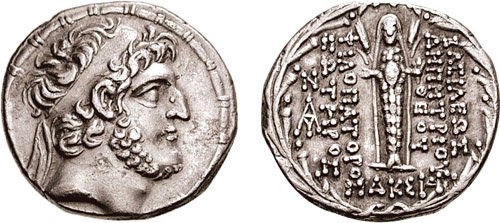 |
Demonstrating just how fragmented the Seleucid Kingdom had become at this point in its long history, we turn to King Demetrius III (97 to 87 B.C.), shown on the silver tetradrachm above, which shows on its reverse the cult statue of the fertility goddess Atargatis.
As one of the sons of Antiochus VIII, Demetrius III ruled only the region around the city of Damascus in Syria. He initially helped his brother Philip I in his fight against Antiochus X, but later attacked his brother without success. Demetrius III was fortunate to survive the debacle, as he was captured by Philip’s Parthian allies and permitted to live the rest of his life in the Parthian court.
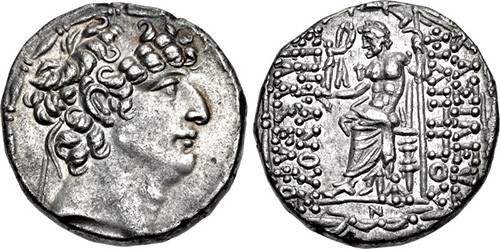 |
As previously mentioned, Philip I took control of the Seleucid capital of Antioch, where he issued the silver tetradrachm above. He was able to fend off an attack from his brother, Demetrius III, and attempted to extend his power through conquest. From this point of his reign, however, the record is silent on what happened to Philip I.
Philip I issued a tremendous number of coins. So many of them were in circulation when the Romans eventually annexed Syria that they copied his coinage to use in the area.
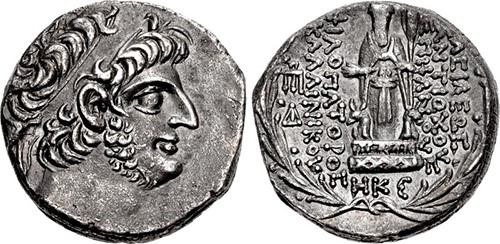 |
The final and youngest son of Antiochus VIII was Antiochus XII (88 to 84 B.C.), who ruled Damascus after the capture of his ill-fated brother Demetrius III. Antiochus XII did not reign long, as he was killed while battling the Nabataean Kingdom.
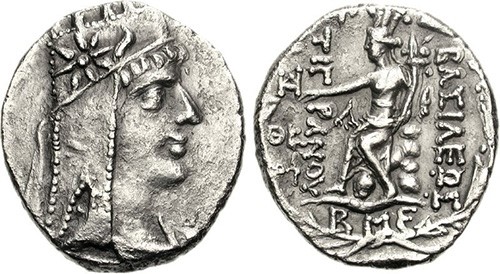 |
Tiring of the constant wars and bloodshed, the Syrians appealed to an outside power — the Armenian Kingdom ruled by king Tigranes II (95 to 56 B.C.) — to take the Seleucid throne. He took control of Antioch but eventually came into conflict with the Romans, who by this time were directly involved in regional affairs.
The Roman general Lucullus defeated Tigranes II, who agreed to remain a client king of Rome, remaining within his kingdom's traditional boundaries.
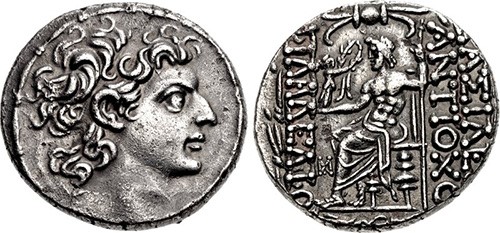 |
The final Seleucid King to issue coins was Antiochus XIII (69 to 64 B.C.), a son of Antiochus X. His mother had sent him to Rome for endorsement as the king of Syria, which they granted. He eventually gained control of Antioch with help from the Romans and began his rule.
He was unpopular and faced revolts from his subjects, even being captured and dethroned during one of these revolts. After this uprising was quelled with the help of the Romans, the general Pompey Magnus refused the plea of Antiochus XIII to be restored to the throne and instead converted Syria into a Roman territory. Antiochus XIII was then murdered by an Arab chieftain, perhaps on orders from Pompey.
With the death of Antiochus XIII in 64 B.C., the Seleucid Kingdom was practically no more. A few minor claimants to the throne battled on for a few years, but in the end, Syria fell under the control of Rome, where it remained for centuries.
All photos courtesy of Classical Numismatic Group
Stay Informed
Want news like this delivered to your inbox once a month? Subscribe to the free NGC eNewsletter today!
